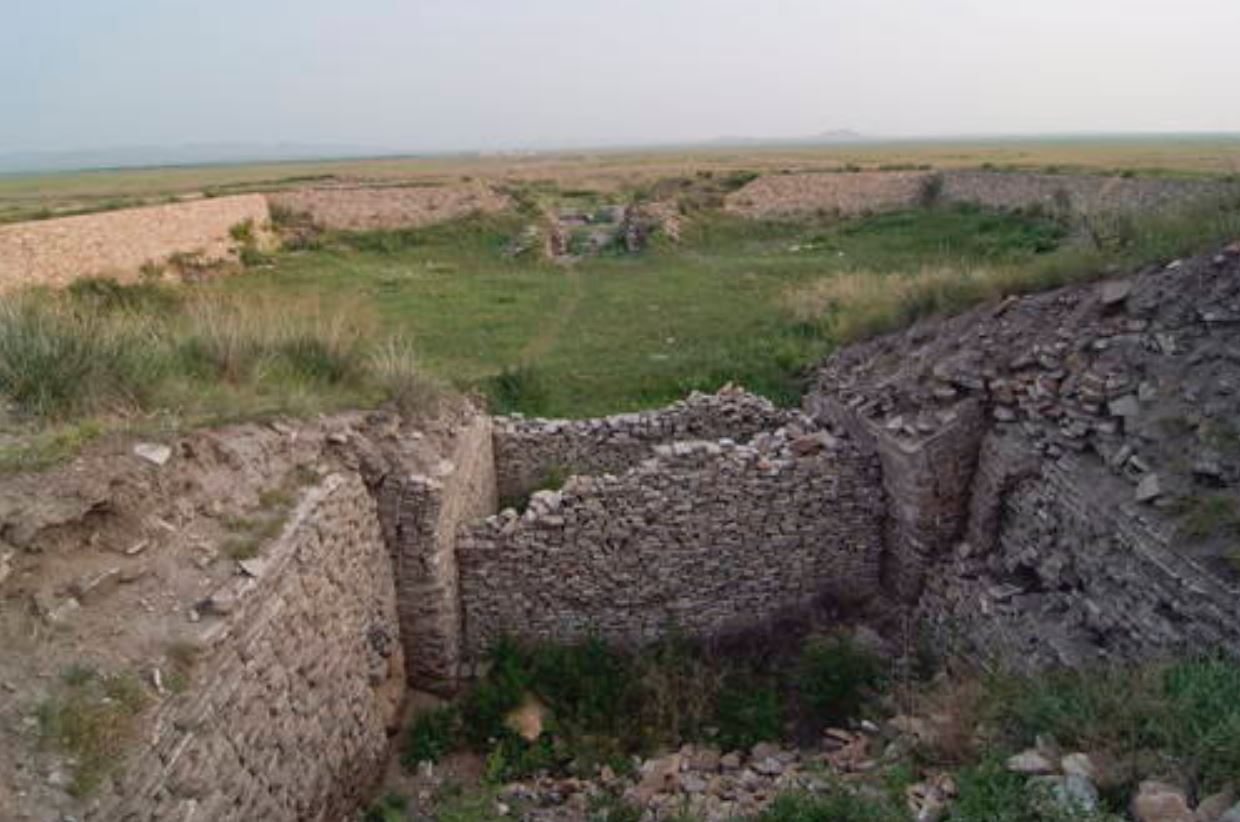Sun Xiaoming photo. UNESCO
Mingde Gate of the Imperial City, World Heritage Site of Xanadu City, Inner Mongolia Autonomous Region.
***
Harmony or Dissonance
by Mike Foldes
Life is a process of constant learning. You’ve heard that before and to only hear it may sound cliché’d. But to see or hear something new concurrent with a mesmerizing realization that “It” was captured therein – well, that is a lesson learned. On the factory floor it may be expressed as, “learning by doing,” or in sales and marketing as “show, don’t tell.” Theocrats might call it epiphany.
I’m writing about this as I’ve experienced such moments twice in just a few minutes after looking at a couple of websites I’d not visited before, produced by people I’d not heard of before, polished facets of a global community we too seldom see up close. The first, a biting visual monologue by a French photographer who followed two Syrian atheist refugees fleeing persecution, as they transitioned in Paris to their new life free not to believe; the second, a revealing show at Wilmer Jennings-Kenkeleba Gallery in lower Manhattan of works by Kamoinge photographers, “a forum for African American photographers” begun in New York City in 1963. Both features appeared in L’Oeil de la Photographie, a favorite French online magazine dedicated to the art and craft of photography, which itself provided one of those zeitgeist moments when discovered a few years ago.
Why this is important is kind of like asking how many angels on the head of a pin? When I was born in 1946, the world’s population was about 2 billion people. There was still room enough for many of the species of plants and animals that no longer exist. In fact, there was still room enough for some human sub-species that no longer exist. The process of natural selection where human populations were winnowed by extreme weather conditions, lack of suitable housing and ineffective medications, is fast disappearing as technology pushes us forward into a future where people just refuse to die, and the hard work of survival takes priority over the wonders of daily life. How many of us, for example, have seen a hummingbird hovering over the faces of echinacea in a backyard garden? Or had the time to hike the vertiginous Appalachian Trail, or climb one of the midden-strewn High Peaks in the Adirondacks? Or explore virgin coral reefs where the radiant colors and panoply of wildlife for which they are known, have not been extinguished?
To understand this is to undergo a dry baptism at the font of creativity. There is little time for Monday-morning quarterbacking, though 20-20 hindsight occasionally reveals what hands-on opportunities miss. While we can’t readily restore lost worlds, any more than we can go back in time, we can revere relics and remnants of past times, providing they aren’t wasted and lost forever to the ravages of war, quakes, fires and other natural and man-made disasters plaguing bio-kingdoms for eons. We have the opportunity here to slow regression to an uncivil state, to preserve, protect and defend what existed from time immemorial.
Which brings me back to the Arts — literary, visual, musical, theatrical, poetic, movement, and more — that provide moments of insight and occasionally self-knowledge unobtainable any way but through those particular and variable windows. Whether we survive as a population of earthlings or not, many works will testify, as do the stone statues of Easter Island and paintings of Lascaux Caves, that we as a people were here. How else would we remember Kublai Khan, but for Coleridge’s prompt:
In Xanadu did Kubla Khan
A stately pleasure-dome decree:
Where Alph, the sacred river, ran
Through caverns measureless to man
Down to a sunless sea.
So twice five miles of fertile ground
With walls and towers were girdled round;
And there were gardens bright with sinuous rills,
Where blossomed many an incense-bearing tree;
And here were forests ancient as the hills,
Enfolding sunny spots of greenery. …
The Arts represent a concentration of imagination and equity of effort that shields us from ourselves. While Kublai Khan’s Xanadu is dust, museums and libraries both are filled with solid ideas and images, representations of the human body and mind invented and reinvented in ways as unique as the experiential interpretations of their creators. Now, as we push forward into a grave new world of 3-D printed hearts, veins and livers, the Arts are more important than ever to understand there is a certain rightness most of us know exists, a harmony that some pursue, while others fall prey to the influences of dissonance and conflict. It’s a reflection of humanity that we can choose to see in ourselves, recognize in others, or bend to a lesser will. You pick the straw.
About the author:
Mike Foldes is founder and managing editor of Ragazine. You can read more about him in About Us.

Recent Comments